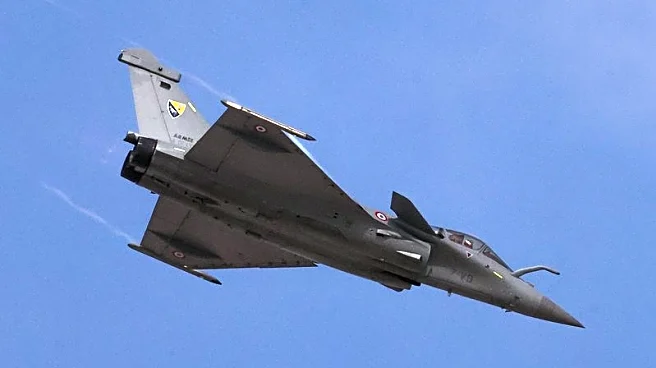What's Happening?
The Marine Corps is facing challenges in achieving its aspirational goals of being a globally responsive, lethal, and resilient force. The Commandant's October 2025 Force Design update highlights the Corps'
ambitions to project power across all domains, but current realities show a lack of balanced lethality and battlefield resiliency. The Corps has been affected by the 'divest to invest' approach, leading to reduced amphibious capabilities and weakened combat development processes. The Commandant has set goals for a ready and capable force, but achieving these requires significant investments in supporting arms and improved amphibious ship readiness. The Corps is urged to reconsider certain programs and focus on sustainable and survivable forces.
Why It's Important?
The Marine Corps plays a crucial role in U.S. national security as an expeditionary force-in-readiness. Addressing the capability gaps is vital for maintaining global responsiveness and effectively confronting adversaries like China. The Corps' ability to tailor forces for any mission is essential for national defense strategy, which increasingly focuses on the Western Hemisphere. Restoring the Marines' capabilities requires congressional support and significant resource allocation. Failure to address these issues could compromise U.S. security interests and the Corps' ability to respond to global threats.
What's Next?
The Marine Corps leadership is expected to take steps to improve readiness and capability. This includes working with the Navy to enhance amphibious ship readiness and reconsidering programs like NMESIS and Naval Strike Missile. The Corps may need to focus on more sustainable and survivable forces, supported by traditional amphibious ships and Maritime Prepositioning Squadrons. Achieving these goals will require time, resources, and support from the Department of War and Congress. The evolving National Defense Strategy will likely influence future decisions and priorities.
Beyond the Headlines
The Marine Corps' challenges highlight broader issues in military transformation and resource allocation. The 'divest to invest' approach reflects a tension between modernization and maintaining traditional capabilities. Ethical considerations arise in balancing innovation with operational readiness. The Corps' situation underscores the importance of strategic planning and collaboration with other military branches. Long-term shifts in defense priorities may impact the Corps' role in national security and its ability to adapt to emerging threats.













